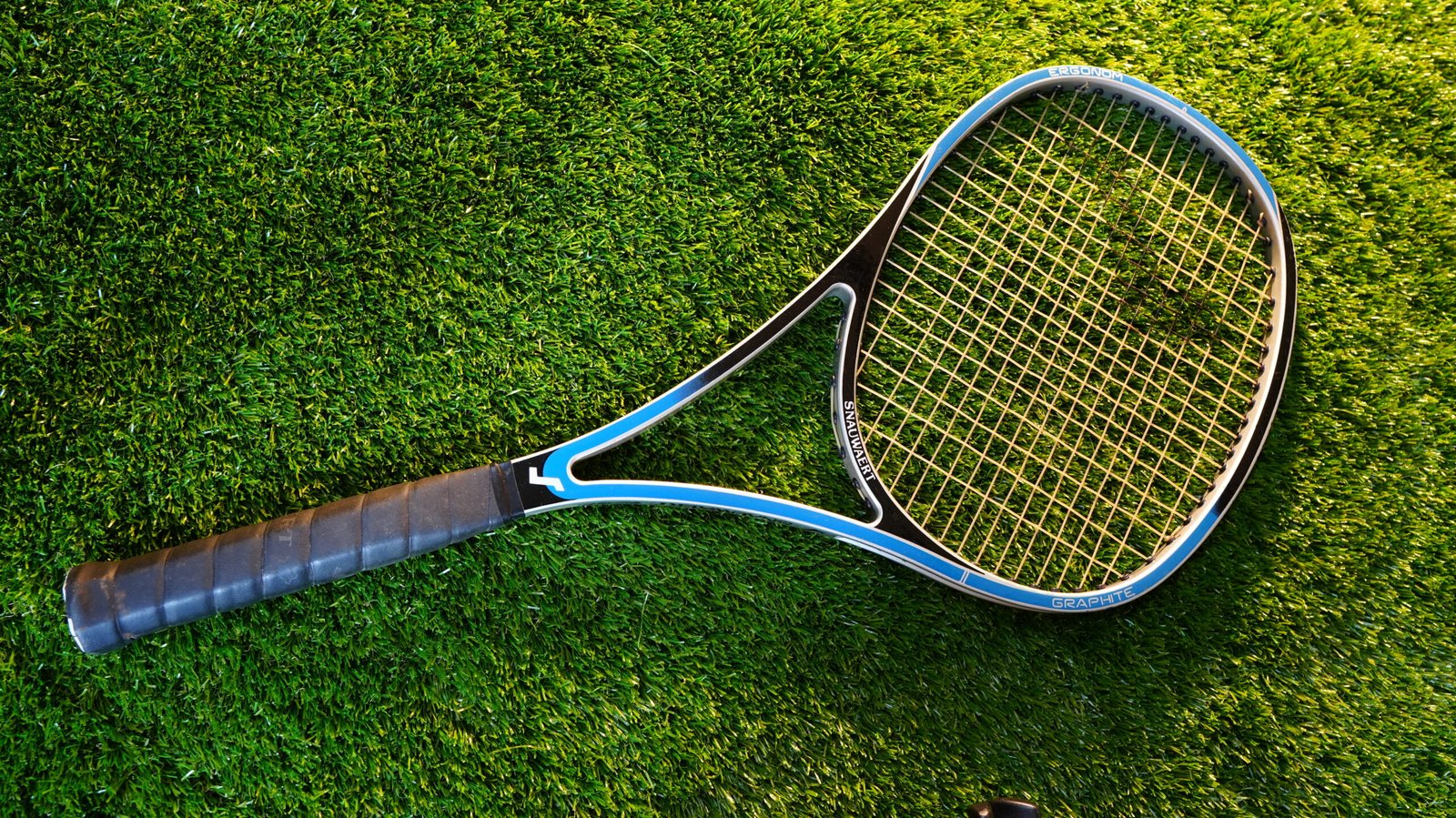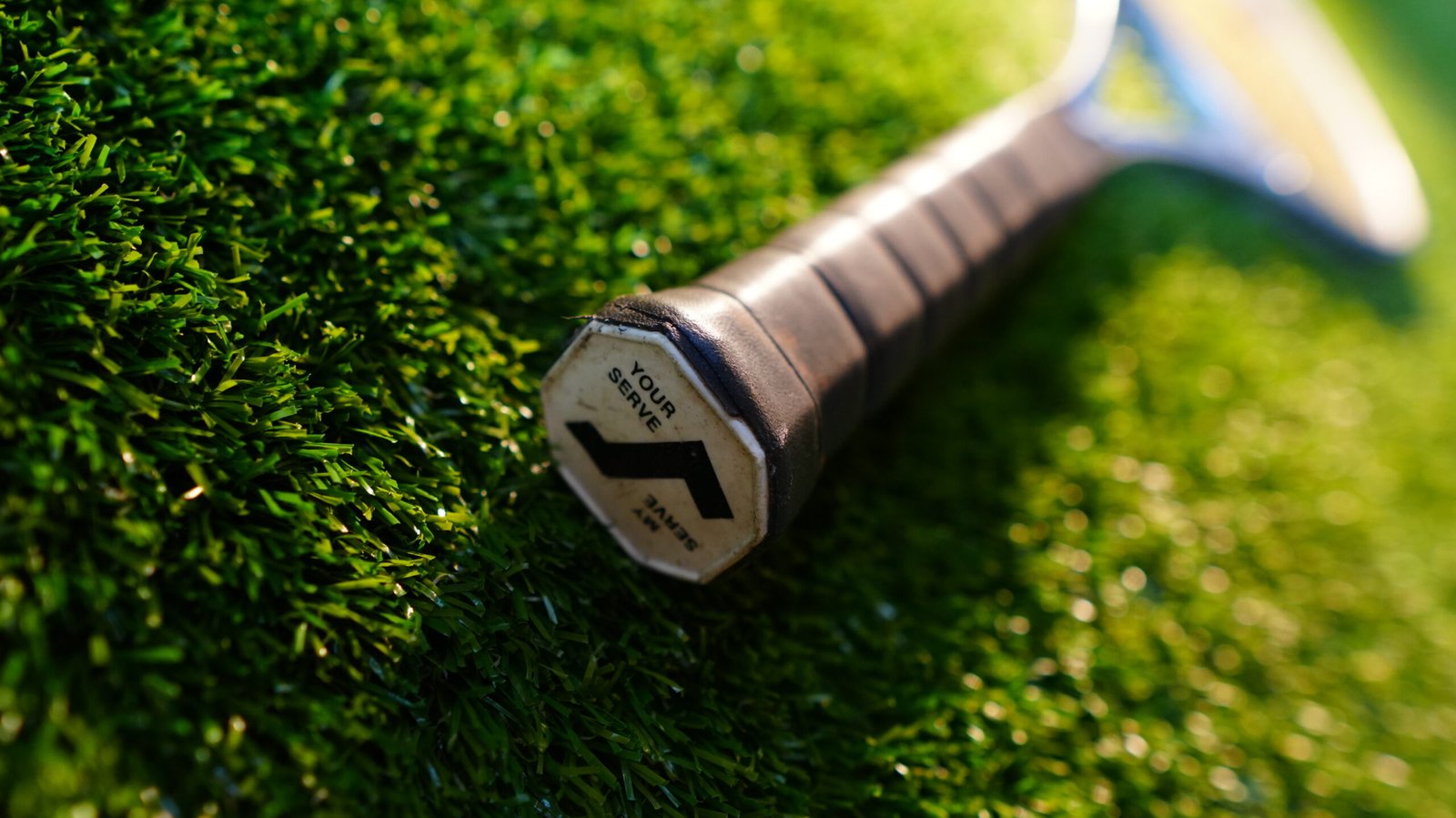Condition
8
10: New
9: Mint
8: Excellent
7: Good
6: Fair
5: Average
4: Below Average
3: Poor
|
Rarity
7
10: Impossibly rare
9: Extremely rare
8: Hard to find
7: Fairly rare
6: Uncommon
5: Common
<4: Big Seller
9: Mint
8: Excellent
7: Good
6: Fair
5: Average
4: Below Average
3: Poor
9: Extremely rare
8: Hard to find
7: Fairly rare
6: Uncommon
5: Common
<4: Big Seller
– – – – – – – – – – –
About This Racket
In the 1990s under big declining sale pressure Snauwaert came out with a racket half-way between inspired and crazy in the Ergonom . It was an attempt to be ergonomic and designed by Carlo. Gibello and produced in Belgium by Snauwaert. The concept was developed and sold to Snauwaert 1983 and quickly went into production, with the first adverts appearing in the British Press in 1984 (priced at £140!). The Ergonom was the first of Snauwaert’s 3 forays into “ergonomically correct” frames. The idea was if the head was rotated 30deg on forehands, it would stay in line with the path of the ball longer than a conventional racquet head. The offset head was intended to increase the sweet spot and increase spin generation .But I guess no one considered the angle of normal serves! There is another issue, unfortunately torque thru off-centre hits. I’ll save you the trouble of buying one, it doesn’t work as advertised and looks ridiculous. Clever idea however.
Specifications (👋 not yet accurate….check back soon)
| Measurements | Value | Performance | Score |
|---|---|---|---|
| Weight | 359g | Power | 40/100 |
| Head Size & Length | 90sq in | 27inch | Control | 45/100 |
| Balance | 5pt head light | Spin | 48/100 |
| Grip | Perforated leather | Handling | 25/100 |
| Strings | 16 x 20 | synthetic | Comfort | 44/100 |
| Flexibility | RA 58 | Consistency | 40/100 |
About Snauwaert
Snauwaert, a name once synonymous with quality and innovation in the tennis world, boasts a rich history that spans nearly a century. Founded in 1928 in Beveren, Belgium, by Valeer Snauwaert and Eugeen Depla , the company initially focused on producing wooden sports equipment. Their expertise in woodworking, honed from their previous work in car body construction, laid the foundation for their venture into the sports industry. During the 1930s, Snauwaert & Depla expanded their operations, moving to a larger facility in Brabantstraat, Beveren, and began exporting their products internationally. However, World War II brought significant challenges, and the company shifted its production to sleds due to the war’s impact on the sports market. After the war, despite the untimely death of Valeer Snauwaert, the company resumed its growth under the leadership of his son Karel and Eugeen Depla’s son Andrée. The 1950s and 1960s marked a period of significant expansion and innovation for Snauwaert. They successfully adapted to the establishment of the European Economic Community in 1957 and capitalized on the tennis boom in America during the 1960s, becoming a leading brand in tennis racket production. The 1970s were a golden era for Snauwaert. The company reached its peak, producing about 800,000 rackets per year and becoming a supplier for major brands like Adidas, Lacoste, and Spalding. This period also saw the introduction of iconic models such as the Snauwaert Pro Wood and the Snauwaert FP10, which were favored by both professionals and amateurs. In the 1980s, Snauwaert continued to innovate, introducing new materials like graphite and composite materials into their rackets. The company also made a significant marketing push by sponsoring prominent tennis players such as Vitas Gerulaitis, Yannick Noah, Emilio Sánchez, and Mats Wilander. This era saw the creation of revolutionary rackets like the Snauwaert Grip 2, Snauwaert Boron, and Snauwaert Mid, which offered a balance of power and control.
Gallery
Snauwaert Timeline
| YEAR | EVENT |
|---|---|
| 1928 | Snauwaert & Depla founded in Beveren, Belgium by Valeer Snauwaert and Eugeen Depla, producing wooden sports equipment. |
| 1930s | Company expands, moves to Brabantstraat in Beveren, and begins exporting to various countries. |
| 1940s | Company produces sleds during World War II. |
| Post-WWII | Valeer Snauwaert dies; his son Karel inherits his role. |
| 1950s | Eugeen Depla passes leadership to his son Andrée. |
| 1957 | Company successfully adapts to the establishment of the European Economic Community. |
| 1960s | Tennis boom in America leads to increased demand and expansion; Snauwaert becomes a leading brand in tennis racket production. |
| 1970s | Peak production reaches about 800,000 per year as a supplier for major brands like Adidas, Lacoste, and Spalding. |
| 1975 | International market under pressure due to cheap Taiwanese rackets. |
| 1979 | Karel Snauwaert launches the Snauwaert-branded racket in the American market. |
| 1980 | Vitas Gerulaitis becomes a brand ambassador. |
| 1982 | Introduction of the ‘Ergonom’ racket with a 42-degree inclined oval. |
| 1985 | Karel Snauwaert unexpectedly dies; production moves from Roeselers to Portugal. |
| 1987 | Jacques Mattan buys a majority of shares. |
| 1988-1989 | Mecir wins Olympics and Indian Wells using a Snauwaert wood and graphite racket. |
| 1990 | Company faces financial difficulties, Bob Bruloot attempts to revive the brand, but fails. |
| 1991 | Snauwaert & Depla closes down. |






